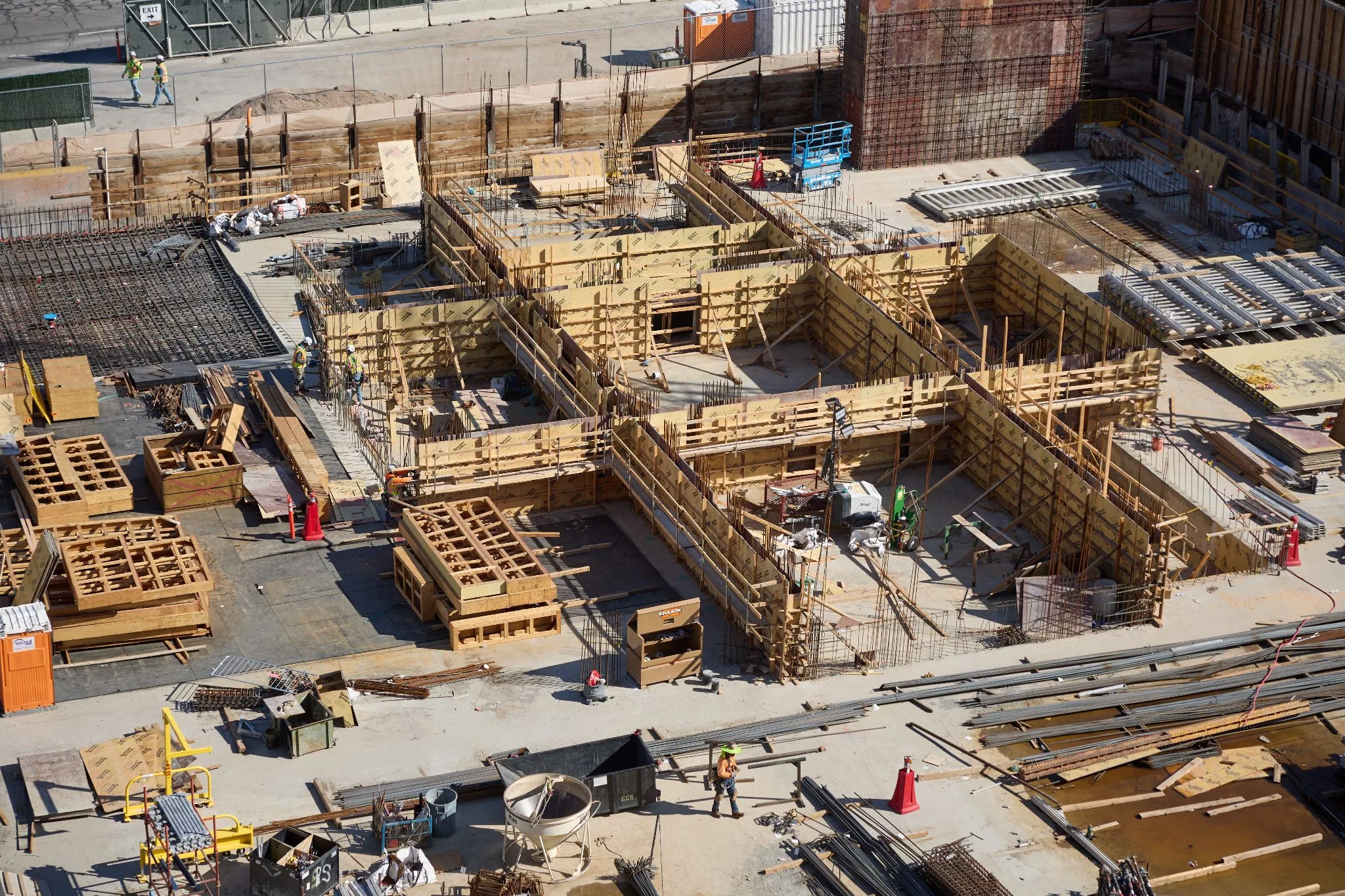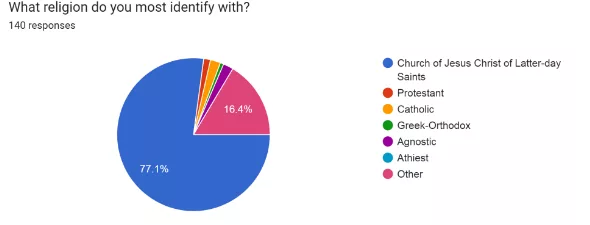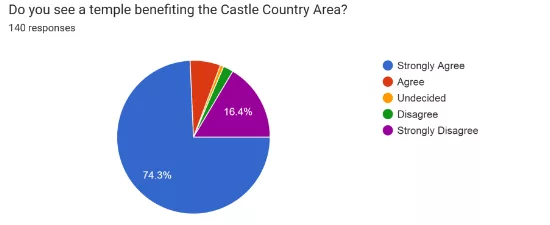
By Aidan Mortensen | KOAL News
Two weeks ago, six months after its announcement, we asked the public for their thoughts on the planned Price, Utah temple. And you responded in spades. One hundred forty survey participants and over 200 social media comments showed both support and opposition to the building. But what did the data say, and how will we report moving forward? The following is a look at the data and a glimpse into our long-term plan regarding coverage of the temple.
The Data
Starting with the religious demographics, 77.1% or 108 survey participants self-identified as members of the Church of Jesus Christ of Latter-Day Saints. Our second biggest group was the other category at 16.4%, with 23 responses.
Other answers include three agnostics, three Catholics, two Protestants and one member of the Greek-Orthodox church.
We also asked participants how they felt about the temple six months after its announcement. To say we received mixed feedback would be an understatement. Of the 140 responses, we found a bit of a divide between supporters and detractors.
The main topic of opposition was the temple’s benefits, which felt exclusive to the LDS community, and the worry of its tax impact.
For the supporters, many rejoiced that a trip to the temple wouldn’t take two hours and through treacherous terrain. Others added that the building will add to the beauty of the area.
Turning to whether or not the temple would benefit the area, we saw results fall closely along religious lines, with 74.3% of participants indicating that they strongly believe the temple would benefit the Castle Country Area. 19.2% of responses fell in the undecided, disagree and strongly disagree categories.
Looking at reasons why people think the temple will benefit the area, one theme rings consistent – economic development. Several respondents singled out the development of restaurants, hotels and gas stations due to tourists utilizing the facility. Others kept it local, saying tourists would shop at local businesses and help bolster the local economy.
On the other side of the coin, concerns were voiced about light pollution, resource allocation to the building and its societal impact. In particular, respondents against the temple zeroed in on the impact it could have on the multicultural fabric within the Castle Country. Others worry about the temple’s tax-exempt status.
What’s next?
We closed the survey by asking how you would guide or report on the temple if you were in charge of us. This proved to be the most insightful question of them all. So, moving forward, here are some of the topics we will look to cover as this story develops:
- Provide progress updates leading up to and as construction progresses.
- Speak with local leaders – both religious and not – about how they see the temple impacting the community.
- Gathering viewpoints from the diverse religious community of the Castle Country and how the temple could impact their respective groups.
- The economic and societal impact that temples have had in other areas by speaking to leaders state and nationwide.
- Data-driven pieces analyzing factors such as housing data, traffic increases/decreases and drug and crime rates as construction continues into completion.


